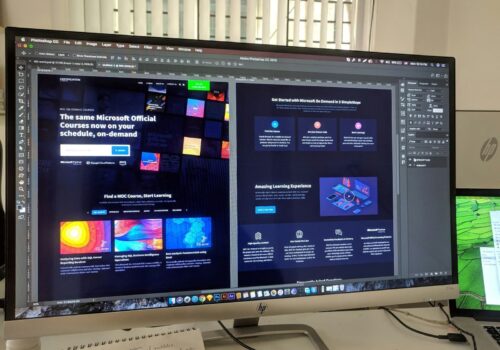The Role of IT Tools in Dissertation Research and Data Analysis
Writing a dissertation is one of the most challenging yet rewarding milestones in academic life. The process involves extensive research, data collection, and analysis, requiring precision and efficiency. In the digital age, Information Technology (IT) tools have become indispensable for students, offering powerful solutions to streamline and enhance every stage of the dissertation process. From organizing research materials to conducting complex data analysis, IT tools not only save time but also improve the quality and accuracy of scholarly work. For additional support, students can also explore helpful resources like https://studiecentrumassen.nl/ to make their academic journey smoother.
1. Organizing Research with IT Tools
One of the first steps in dissertation writing is gathering and organizing a vast amount of research materials. IT tools provide efficient solutions for managing these resources.
• Reference Management Software: Tools like Zotero, EndNote, and Mendeley simplify citation management. They allow students to store, organize, and format references in various citation styles with just a few clicks.
• Digital Libraries and Databases: Online platforms such as JSTOR, PubMed, and Google Scholar provide access to a wealth of academic articles, books, and journals. These databases make literature searches faster and more comprehensive.
• Note-Taking Apps: Tools like Evernote, OneNote, or Notion enable students to organize their notes, attach multimedia, and create categorized repositories of ideas and sources for easy retrieval.
2. Enhancing Literature Review and Analysis
Conducting a thorough literature review is crucial for setting the foundation of a dissertation. IT tools support critical reading and analysis of texts.
• PDF Annotators: Applications like Adobe Acrobat, PDF Expert, and Kami allow students to highlight, annotate, and comment on research papers directly, making it easier to identify key ideas.
• Text Analysis Software: Tools like NVivo and MAXQDA enable qualitative analysis of large text datasets, allowing students to identify patterns, themes, and trends in existing literature.
3. Data Collection Made Efficient
Collecting data is a pivotal aspect of many dissertations, and IT tools streamline this process significantly.
• Online Survey Platforms: Tools like Qualtrics, SurveyMonkey, and Google Forms simplify the design and distribution of surveys. They also automate data collection and provide basic analytics.
• Social Media and Web Scraping Tools: For studies involving digital behavior or online trends, tools like Scrapy or Beautiful Soup can gather data from websites and social media platforms efficiently.
• Mobile Apps for Fieldwork: Applications such as KoboToolbox or GIS mapping tools assist researchers in collecting data in the field, especially in disciplines like geography or public health.
4. Data Analysis with Advanced IT Solutions

Data analysis is a cornerstone of dissertation research, and IT tools offer robust capabilities for both qualitative and quantitative analyses.
• Statistical Analysis Software: Programs like SPSS, SAS, and R are widely used for statistical analysis. They allow students to handle complex datasets, perform advanced calculations, and generate visualizations.
• Spreadsheet Tools: Microsoft Excel and Google Sheets are invaluable for managing smaller datasets. They offer features for basic analysis, visualization, and chart creation.
• Qualitative Analysis Tools: As mentioned earlier, NVivo and ATLAS.ti help analyze non-numeric data such as interviews, videos, and open-ended survey responses, making sense of qualitative findings.
5. Visualization of Research Findings
Presenting data in a visually appealing and easy-to-understand manner is critical for dissertations. IT tools simplify this process.
• Data Visualization Software: Tools like Tableau, Power BI, and Infogram enable students to create interactive charts, graphs, and dashboards that clearly communicate findings.
• Graphic Design Tools: Canva and Adobe Illustrator allow for the creation of polished, professional-looking visual content, from infographics to presentation slides.
6. Collaborative Writing and Feedback
Dissertations often require input and feedback from advisors and peers. IT tools enhance collaboration and streamline the editing process.
• Cloud-Based Platforms: Services like Google Drive and Microsoft OneDrive allow multiple users to work on a document simultaneously, ensuring seamless collaboration.
• Writing Platforms: Tools like Overleaf (for LaTeX users) or Scrivener provide advanced features for drafting, organizing, and formatting large documents.
• Feedback Tools: Online platforms such as Grammarly and ProWritingAid help students refine their writing by identifying grammar errors, improving sentence structure, and ensuring academic tone.
7. Ensuring Accuracy and Credibility
Maintaining academic integrity and accuracy is essential in dissertation research, and IT tools help students meet these standards.
• Plagiarism Checkers: Tools like Turnitin and Grammarly’s plagiarism checker help ensure that the dissertation meets originality requirements.
• Fact-Checking Resources: IT tools like citation cross-referencing software and digital archives ensure that sources and data are credible and properly cited.
8. Managing Time and Staying Focused
IT tools also help students manage their time and maintain focus during the lengthy dissertation process.
• Project Management Tools: Platforms like Trello, Asana, or Monday.com allow students to set milestones, track progress, and stay organized.
• Focus Apps: Applications like Focus@Will or the Pomodoro technique timer apps help minimize distractions and promote productivity during writing sessions.
9. Security and Backup
The importance of safeguarding one’s work cannot be overstated, and IT tools offer reliable solutions for data security.
• Cloud Storage: Google Drive, Dropbox, and iCloud ensure that all work is securely backed up and accessible from any device.
• Version Control: Tools like Git or document versioning in Microsoft Word help track changes and prevent accidental data loss.
Conclusion
IT tools have transformed the way students approach dissertation research and data analysis. From organizing resources and collecting data to conducting in-depth analyses and presenting findings, technology simplifies and enhances every stage of the process. By leveraging these tools effectively, students can save time, improve accuracy, and produce high-quality dissertations that meet rigorous academic standards. As IT continues to evolve, its role in academic research will only become more central, equipping students with the tools they need to succeed in an increasingly data-driven world.




